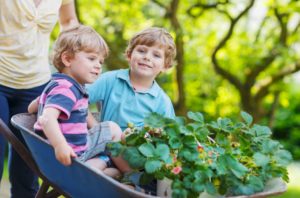Latest Posts
- Have a purpose when backyardingAugust 5 2021
- Study: Time outside alters our microbiomeAugust 4 2021
- Happy National Mutt Day from Mo-MoJuly 27 2021
- New home? Avoid these common mistakes in your yard.July 26 2021
- Infographic: Plan a backyard staycation this summerJuly 22 2021
Categories
Archive
March 2nd
Invest in your yard for health and happiness

“Backyarding”, the new trend to move many indoor activities to the great outdoors, is here to stay. Investing in your outdoor life in your own backyard creates opportunity for safe connection, is a break from being cooped up inside, and offers a host of health and well-being benefits, as well as environmental ones.
Just in time for spring planting, here are a few tips to ensure you make the right investments in you yard:
Plant with purpose. Right plant, right place is the Golden Rule of living landscapes. Location, maintenance, sunlight and watering needs should all be considered, as well as your climate zone and lifestyle. (For more information refer to the USDA’s Plant Hardiness Zone Map.)
Select the right grass. Nearly all Americans have a yard, and 89% of those who do correctly believe having grass in their yard is good for the environment. But selecting the right grass is important. There are hundreds of varieties of turfgrass, and some of them – like Buffalo and Bermuda – even do well in drought-prone areas and also will survive foot traffic, children’s play, and pets.
Mix native plants with adaptive plants and grasses. In man-made cities and suburbs, we must incorporate plants in areas with a lot of concrete, asphalt, people, and traffic. You need both native plants and drought-resistant adaptive species that can thrive in these conditions.
Keep pollinators in mind. Remember that bees, butterflies, bats, and birds are backyarding, too. Your yard and our community green spaces are part of the connected ecosystem that they provide food and shelter, year-round.
Plant to slow and capture water. Water sheets off hard surfaces, asphalt, and other hardscapes in cities and suburbs. Grass and plants slow down and capture this water, recharging underground aquifers.
Water wisely. Only water your yard when it is necessary. Install watering solutions – like smart controllers on irrigation systems – to help you use less water while maintaining a living landscape.
To learn more, go to TurfMutt.com.





